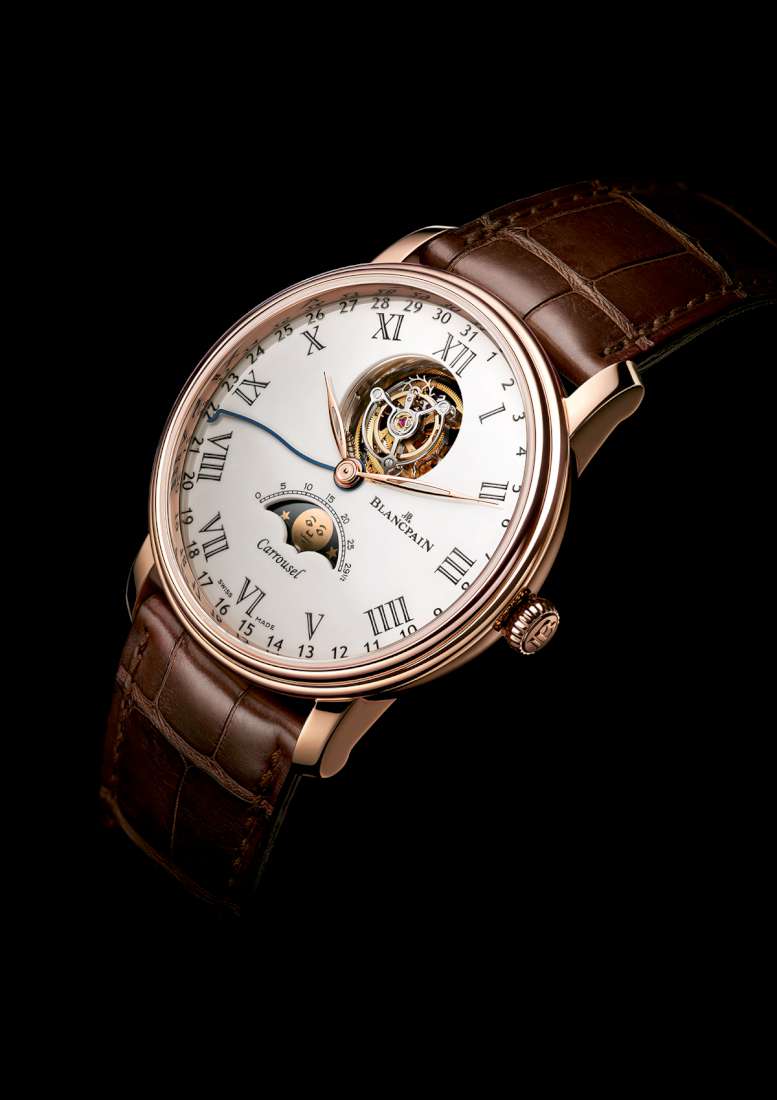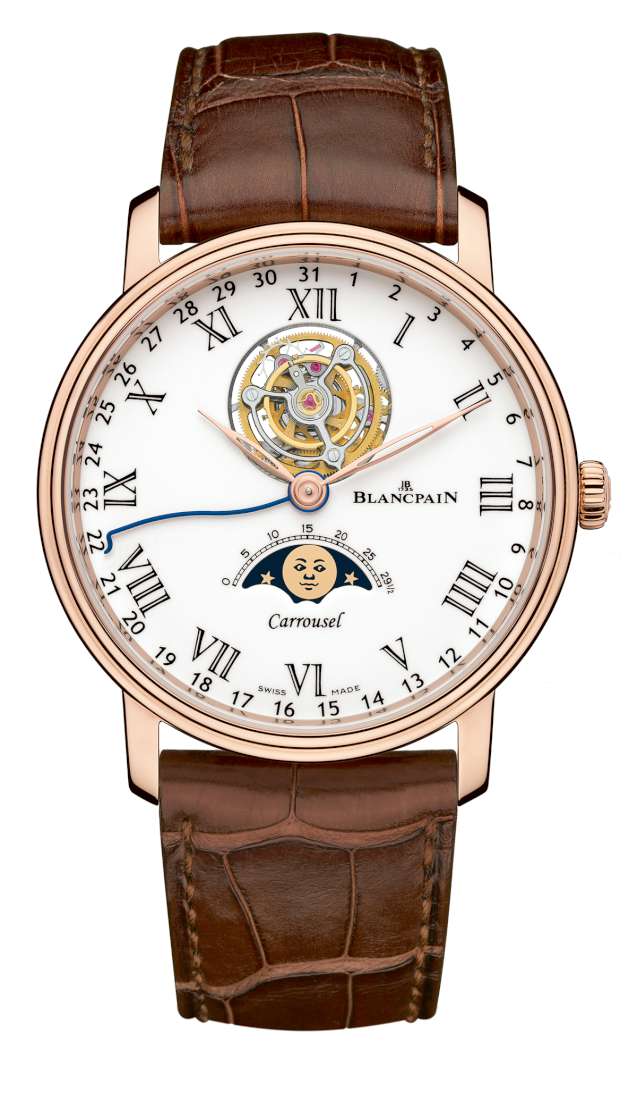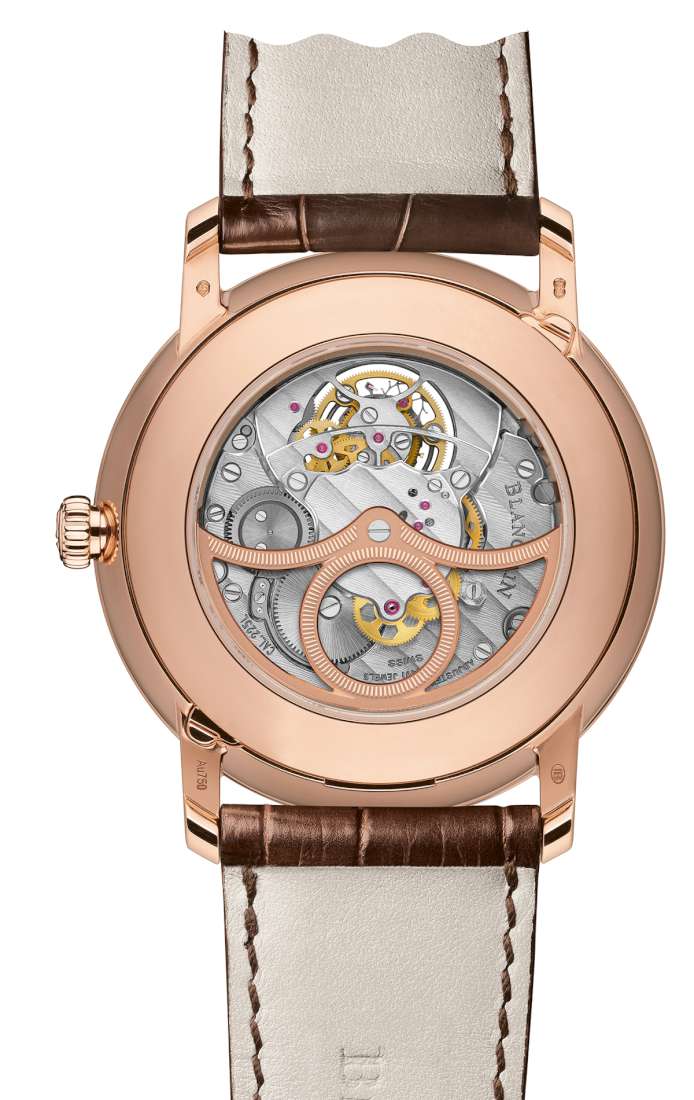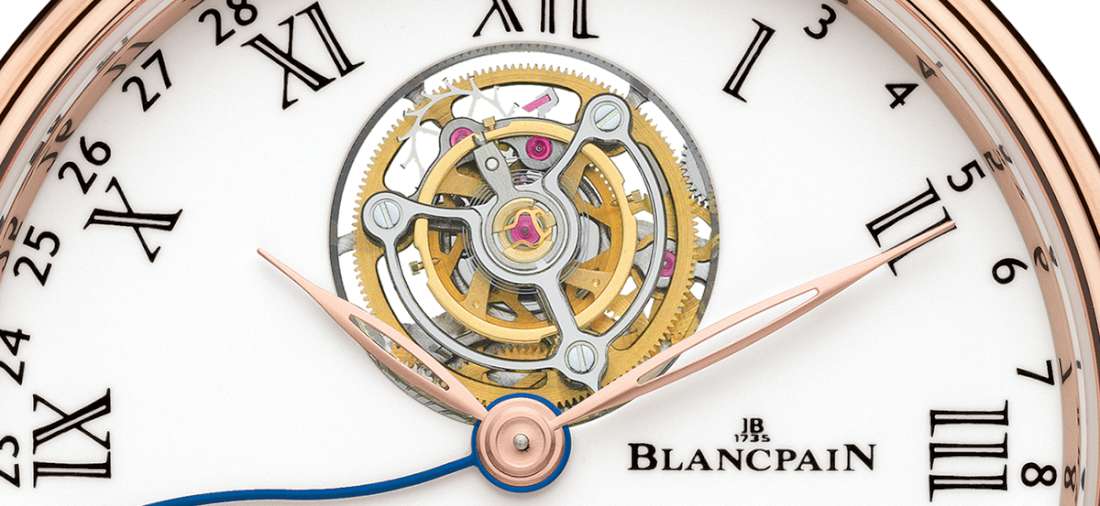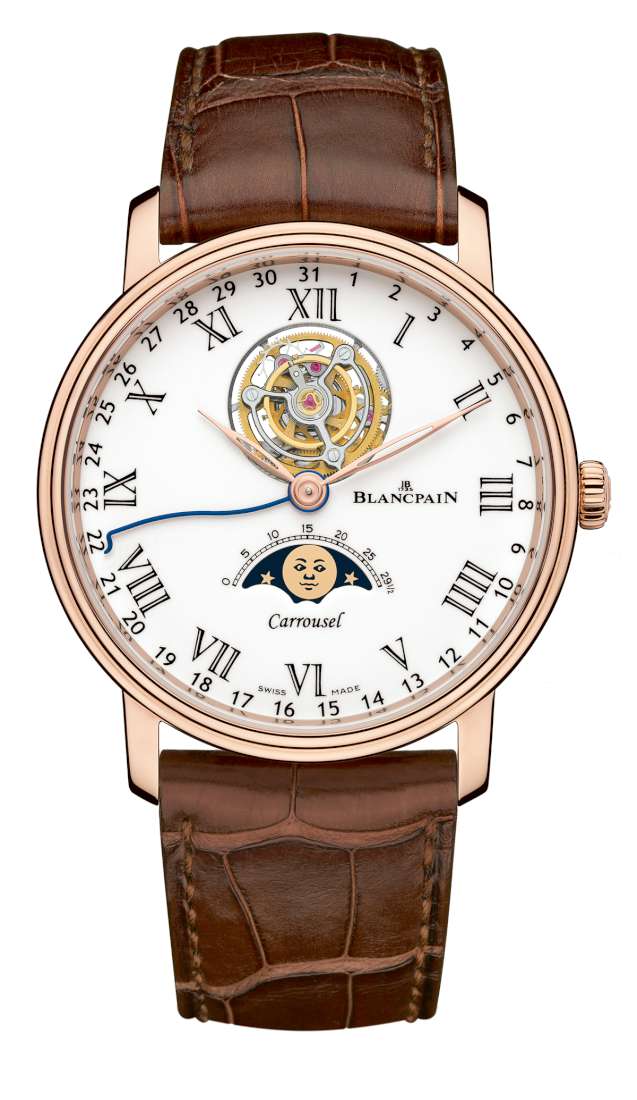 The Blancpain Carrousel Phases du Lune (Ref. 6622L-3631-55B), a watch in the Villeret collection, features what has become a Blancpain speciality, the Carrousel, or karussel. This complication, like the tourbillon, was designed to constantly vary the position of the escapement so that the variations in frequency caused by gravity would be evened out over time. In Breguet’s tourbillon, just one wheel drives both the escapement and the carriage, and the speed of rotation of the carriage is once per minute or faster. In the karrusel, the carriage is driven by the third wheel pinion, while the escapement is driven by the fourth wheel staff, which passes through the centre of the karrusel carriage bearing. So carriage and escapement are driven by separate sources of power. In the traditional design, the karrusel carriage rotates very slowly, once per hour.
The Blancpain Carrousel Phases du Lune (Ref. 6622L-3631-55B), a watch in the Villeret collection, features what has become a Blancpain speciality, the Carrousel, or karussel. This complication, like the tourbillon, was designed to constantly vary the position of the escapement so that the variations in frequency caused by gravity would be evened out over time. In Breguet’s tourbillon, just one wheel drives both the escapement and the carriage, and the speed of rotation of the carriage is once per minute or faster. In the karrusel, the carriage is driven by the third wheel pinion, while the escapement is driven by the fourth wheel staff, which passes through the centre of the karrusel carriage bearing. So carriage and escapement are driven by separate sources of power. In the traditional design, the karrusel carriage rotates very slowly, once per hour.
Which complication is better? In the tests performed on chronometers in the late 19th century, karrrusels generally performed better, perhaps because their slower rotation required less energy. But today, they are both beautiful complications, and, as any quartz watch will outperform even the finest mechanical watch, they are more artforms than a real response to need for keeping time.
The karrusel was invented by Bahne Bonniksen, born in 1859 in Denmark. He had trained at watchmakers NP Thorsmark, and then moved to London to further his apprenticeship. He set up his own workshop in Coventry, on Norfolk Street, and attained great success, eventually employing over 25 watchmakers. He patented his new invention in 1892. It was adopted by British watchmakers and enabled them to achieve great success at watch trials. Bonniksen’s own watch design won a deck watch trial at the Royal Observatory in Greenwich in 1903: it can be seen at the Royal Museums in Greenwich. Bonniksen died a wealthy man in 1935.
 The karrusel virtually disappeared from watchmaking with the decline of British watchmaking, until Blancpain reintroduced the complication in 2008. In this watch in the Villeret collection, the karrusel is combined with a moon phase for the first time. Blancpain’s treatment of this complication is different to Bonniksen’s original in that the carriage performs a rotation every minute, like the tourbillon. The karrusel itself is prominent at the top of the dial, perfectly balanced by the moon phase below. The moon itself has a lovely, cheeky face (she seems to be saying, “Are you calling me a lunatic? Look at yourself, baby”), with the immaculate finish that hallmarks all Blancpain’s watches. The wavy blue hand marks the date on a scale at the outer edge of the dial. The dial is in grand feu enamel, with painted Roman numerals.
The karrusel virtually disappeared from watchmaking with the decline of British watchmaking, until Blancpain reintroduced the complication in 2008. In this watch in the Villeret collection, the karrusel is combined with a moon phase for the first time. Blancpain’s treatment of this complication is different to Bonniksen’s original in that the carriage performs a rotation every minute, like the tourbillon. The karrusel itself is prominent at the top of the dial, perfectly balanced by the moon phase below. The moon itself has a lovely, cheeky face (she seems to be saying, “Are you calling me a lunatic? Look at yourself, baby”), with the immaculate finish that hallmarks all Blancpain’s watches. The wavy blue hand marks the date on a scale at the outer edge of the dial. The dial is in grand feu enamel, with painted Roman numerals.
 The watch’s beautiful simplicity is enhanced by the absence of pushers for adjusting date and moonphase. Regulations are performed by means of two recessed buttons set under the top lugs.
The watch’s beautiful simplicity is enhanced by the absence of pushers for adjusting date and moonphase. Regulations are performed by means of two recessed buttons set under the top lugs.
The watch movement has 281 parts, 61 of which for the karrusel carriage. The movement and the oscillating weight can be viewed through the sapphire caseback. The case is 42 mm in diameter, with 30 metres water resistance rating. Power resistance is remarkable at 120 hours. The watch is available in two versions, red gold with chocolate brown alligator strap, and a limited edition in platinum with black alligator strap.
